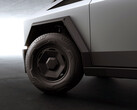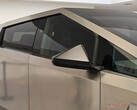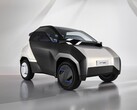The rear of Tesla's Cybertruck is gigacast into one piece of aluminum alloy and its durability as a material was subjected to a trailer towing hitch test against a good ol' RAM 2500 pickup truck with a traditional steel frame.
In short, the Cybertruck's aluminum gigacasting to which the trailer hitch is attached snapped off at about 10,400 lbs of tongue load, while the steel frame of the old RAM 2500 survived even higher downforce.
Granted, this has little to do with Tesla's advertised 11,000 lbs towing capacity which is valid for pulling the Gross Vehicle Weight Rating (GVWR) of a trailer forward and back, rather than it bouncing up or down on the hitch, but it is still an interesting material choice comparison.
Cybertruck vs RAM 2500 towing hitch durability test
Tesla uses a 6000-series aluminum for its Cybertruck gigacastings, compared to, say, the 7000-series that Apple started using for devices like the iPhone 16 Pro Max after the Bendgate fiasco.
The 6000 series is softer, as it has less zinc and magnesium in the alloy. The porous material also ages faster than steel under various pressures, as its wear and tear accumulates with each heavier load or stress applied.
This difference in material fatigue characteristics may have been on display when the 2024 Cybertruck's aluminum frame snapped, while the 1994 RAM 2500's steel frame survived the same amount of tongue load, and then some.
Granted, the RAM's hitch bent, and its frame may have still undergone some twisting after being pulled on by a 50,000 lbs excavator, but it didn't break like the Cybertruck. Tesla's gigacast rear snapped completely, bringing the whole bumper area down, and revealing some interesting engineering decisions like what seems like a purple glue holding the frame together.
While the optics of this adhesive are bad on a $100,000 Cybertruck, a commenter points out that this is probably just structural epoxy that car companies use as a chemical welding solution at places where spot welding is not a good option.
The snapped Cybertruck frame didn't look good, either, but the SAE J684 standard that regulates towing load characteristics stipulates that the frame must be able to survive vertical pressure equal to 50% of a trailer's GVWR without deforming, and the Cybertruck nearly doubled that threshold before its frame broke.
Previous Cybertruck towing tests showed that it is perfectly capable of towing its maximum advertised capacity of 11,000 lbs, with just the battery range suffering as a result. Other durability tests involving vertical tongue loads, however, like the infamous F-150 pull, showed that this kind of weight bouncing on a Cybertruck's trailer hitch can snap the softer-than-steel gigacast frame indeed, however uncharacteristic.
Such probes hint at some scenarios when Cybertruck owners may have to be more careful before getting into. Pulling out heavy vehicles, or cresting a hill and even hitting potholes with an overloaded trailer behind could potentially increase the chance for damage to the gigacast aluminum frame, especially to its thinner sections.
Source(s)
JRE (YT)










